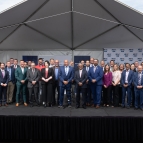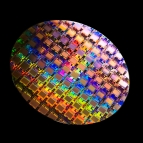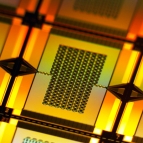BEACON
A research team is developing an instrument that, when carried by a weather balloon into a developing storm, will collect data on the electrical charge environment within the storm cloud. The Balloon-Enabled Atmospheric Convection Observation Network (BEACON) will be a constellation of these 5.5-pound instruments whose combined data will provide a picture of the growing electric fields within a potential thunderstorm (i.e., atmospheric convection). The BEACON team's goal is to solve a problem that worries air traffic controllers: Is it safe to send aircraft through a cloud or might the cloud produce lightning that damages the fuselage? Currently, radar systems provide a lot of information about the structure of clouds — where ice is forming, where raindrops are, how dense the precipitation is. However, no system provides data about the makeup of electrical charge in clouds prior to lightning, and the weather models that correlate the profiles of moisture in clouds with electrical activity are currently theoretical. BEACON could supply the data needed to allow charge structure to be determined — before the first bolt of lightning strikes — solely on the basis of radar returns.




